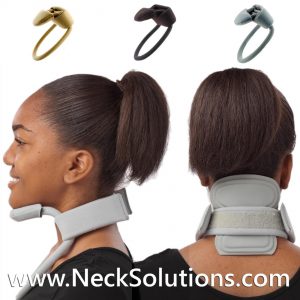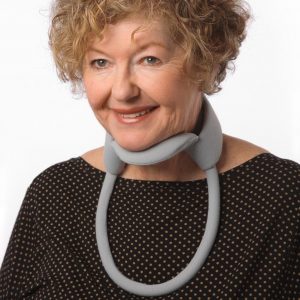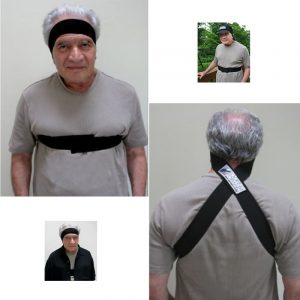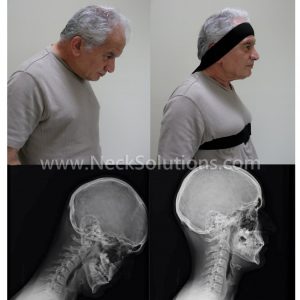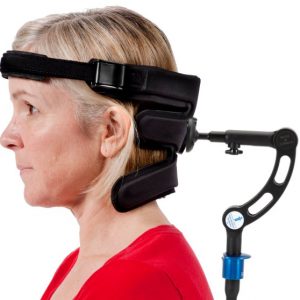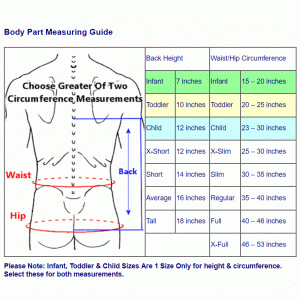Radiation Fibrosis Syndrome Of The Neck Causes Head Drop Syndrome
Radiation fibrosis syndrome causes weakness, fibrosis and wasting of muscles. It can result in dropped head syndrome, where the neck muscles cannot support the weight of the head, causing the head to fall forward.
It is usually known as a late complication for treatment of head and neck cancer with radiation therapy.

- A 2006 report in the journal Muscle & Nerve noted three cases of late onset drop head syndrome after radiotherapy for Hodgkin’s disease for both local and whole body radiation therapy. The onset can happen anywhere between 2 and 27 years after treatment. The authors noted contraction and fibrosis (scar tissue) of the muscles in front of the neck, atrophy of the muscles in the back of the neck and shoulder girdle.
- A 2016 report in the Journal of Radiation Research reported early onset of head drop syndrome after head and neck cancer radiotherapy. They noted onset at 5, 6 and 15 months. Compared with later onset, those with early onset did not have atrophy of the neck extensor muscles and the symptoms slightly improved. We consider that the early-onset DHS differs from late-onset DHS
The authors investigated the dose of radiation to the neck extensor muscles, comparing to those treated and not developing early onset. The proposed dose to the neck extensor muscles was at least less than 50 Gy (GY is an abbreviation for Gray, which is a measure of absorbed radiation) to avoid early onset dropped head syndrome due to radiation therapy.
- A 2013 report in the journal Laryngoscope also reported 5 patients followed-up for head and neck squamous cell carcinoma who presented with a fixed flexion deformity of the neck. The authors noted severe atrophy and weakness of the neck extensor muscles and fibrosis of the anterior (front) muscles that forced the jaw to the chest.
- As early as 2008, a report in the Journal of Clinical Neuromuscular Disease noted an acute (early) onset of head drop triggered by chemoradiotherapy following neck surgery for laryngeal cancer.
- A 2012 report in the International Journal of Radiation Oncology, Biology, Physics examined 12 Hodgkin lymphoma survivors treated with mantle field radiotherapy. Ten patients had neck complaints of pain and muscle weakness. They found the neck flexor muscles (front of neck) were affected more than the extensor muscles (back of neck). The sternocleidomastoid muscle in the front of the neck was severely atrophied in 8 of the patients. The neck muscles showed muscle related damage, whereas the shoulder and arm muscles has mostly nerve damage.
The authors noted that many patients treated with mantle field radiotherapy developed severe atrophy and weakness of the neck muscles. They indicated the muscle damage is most likely caused by progressive microvascular fibrosis. They indicated there was also nerve damage within the radiation field.
- A 2018 report in Rinsho Shinkeigaku (Clinical Neurology) noted dropped head as a late-onset complication of radiotherapy in a survivor of Hodgkin lymphoma. Sixteen years after radiotherapy, the patient’s posterior (back) neck muscle strength started to decline. There was problems holding the head up and developed severe neck and shoulder pain. The areas were consistent with the areas of radiation therapy and the diagnosis was radiation induced myopathy.
- The authors of a 2015 review in the journal Strahlentherapie Onkologie noted drop head syndrome exhibits weakness of the neck extensors and an inability to extend the neck, with severe cases having the head fixed in a “chin to chest position.” Among other terms, they searched indexes for “dropped head syndrome,” “radiation-induced myopathy,” “radiation-induced neuropathy,” and “radiation-induced movement disorder”. They noted most cases (40/45 patients) occurred less than 15 yrs after radiotherapy. They concluded, “To prevent these disorders, sparing of the spine and paraspinal muscles is desirable.”
While there is no known cure for radiation fibrosis syndrome, there are supports that can help with the symptom of drop head syndrome. Though rare, it is increasingly becoming recognized as a cause of head drop syndrome, which is most often associated with neuromuscular disorder like ALS or Parkinsons. Hopefully, more research will find proper dosage, muscle sparing techniques, and treatments.
- A 2018 study in the journal PM & R used the Headmaster Collar for dropped head syndrome resulting from radiation therapy complications in Hodgkin lymphoma survivors. The collar has been used as an ALS head support for decades.
Over 60% used the collar beyond 6 months. Most wore it up to 3 hours per day usually during seated activities. The most common modification was extra padding. As with any rigid orthotic, there is always a compromise between support and comfort, however, it is a very useful tool in the management of dropped head due to radiation fibrosis syndrome.
A 2019 review in the Journal of Oncology Nursing noted the syndrome causes fatigue, weakness, muscle pathology and painful muscle spasms that can cause severe contracting and wasting of sternocleidomastoid and scalene muscles, which may cause neck weakness, head drop, and torticollis.
- A 2021 report in Clinical Case Reports Cervical osteomyelitis (infection) has the highest risk for neurologic complications (motor weakness or paralysis). High‐dose radiation therapy for primary head and neck malignancies is a known risk factor for osteomyelitis at the site. The authors indicate, “It is crucial to consider cervical osteomyelitis as a differential diagnosis for neck pain in patients who underwent radiotherapy for early diagnosis and management, thereby preventing the development of potentially debilitating neurologic symptoms.”
Supplements
- A 2020 study in the International Journal of Scientific Research treated patients for six months with Tocotrienol capsules and evaluated for radiotherapy fibrosis complications related to cervical muscles and found improvement in up to 80-90%. Other quality of life measures like depression, social life, ability to work normally and general well being were also improved. The authors concluded Tocotrienols given after radical radiation treatment for six months have significant and subjective improvement of symptoms.
- Previous benefits in treating fibrosis syndrome with Tocotrienols were similarly noted in a 2017 The Pharma Innovation Journal study. There are other studies like the International Journal of Radiation Biology that indicate the potential of its radioprotectant qualities, and a 2018 article in Antioxidants indicating its use for radiation countermeasures in humans. Some combine it with Pentoxifylline, a prescription vasodilator and anti-inflammatory.
- In 2022 Case Reports Cureus the authors indicate this condition may result within a few weeks, months (early-onset) or even several years (late-onset) following radiotherapy, with the late onset more commonly encountered. An MRI indicated myositis of the cervical paraspinal muscles, with electrodiagnostic studies indicating an inflammatory myopathic process of the the cervical paraspinal and shoulder girdle muscles in an early onset diagnosis within 3 months. The authors indicate, “Prompt recognition of the symptoms associated with DHS [dropped head syndrome] and timely treatment offer the best prognosis for recovery.”
After radiation therapy damage causes myopathy of the cervical extensors and, in the front, anterior scar contractures along with structural changes that often do not respond well to medications. According to the authors, the condition may benefit from non-surgical treatments including a cervical collar/brace and non-surgical therapies. When leading to vertebral compression and front muscle contraction, surgical intervention may be warranted.
